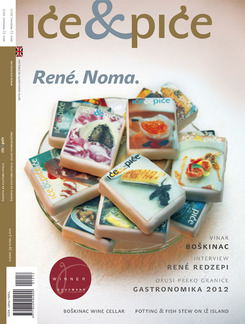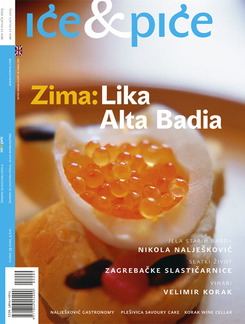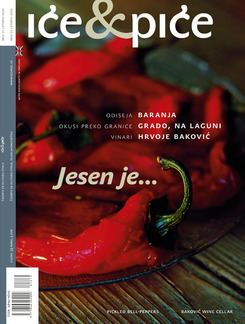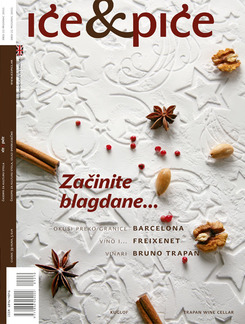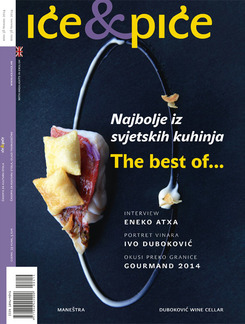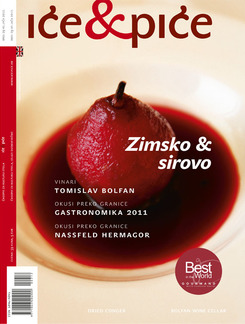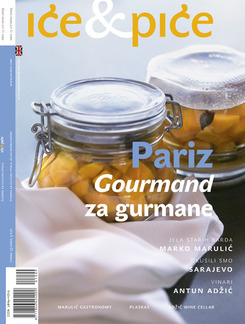A painter can express whatever he wants by means of flowers or clouds, claimed Eduard Manet, one of the masters who helped establish Paris as the capital of art towards the end of 19th century. Yet, what did Manet intend to express with his very first nature morte that he has ever painted, Oysters from 1862? I keep pondering this question as we are driving towards Ston, with a clearly defined task – to enjoy oysters as they are in their prime, before St. Joseph’s Festival; to unravel the mystery of their taste, each year a bit different, as elusive as the colour of the sea they originate from.
On the wooden table there is a plate with six shellfish served in their bottom shells, two more placed next to the plate, on the tabletop, with halves of lemon and a small bowl of sauce in the background. The foreground features, almost unnoticed at first glance, a single fork. This painting, composed in a cadence of browns, silvers and greys, remained with the painter until his very end. It was painted for his fiancée, Suzanne Leenhoff. Everything is pushed into the foreground, it seems that one could merely reach for the fork to engage in the feast. Manet loved puzzles with subtly hidden solutions. Are those shellfish merely a hint of other delights that may follow? Oysters have always been associated with love. An outstanding man in every way, Casanova would start his day by consuming sixty of them.
Yet, an intriguing correspondence on marital creatures between Jakov Sorgo, the Duke of Ston, and Ulysse Aldrovandi, the famous naturalist from Bologna, contains not a single word on beneficial effects of oysters in matters of love. The other three members of this 16th-century correspondence, gentlemen Menze, Giganti and Dondino, are equally close-mouthed on this subject, although they are perfectly willing to teach us about how to grow oysters on branches of prickly juniper, what problems may arise whilst transporting them, as well as how to obtain them, along with date shells, mussels and pelegrines, as scallops are called in Dubrovnik.
Being the Rector of Ston, Jakov Sorgo was highly privileged. At holidays, shellfish growers would present him with a certain amount of oysters, as the state had a monopoly on their growth. The Dubrovnik Republic gave oysters as gifts to distinguished foreigners and served them at official feasts, yet it was forbidden to export them.
Back in those times it was customary to serve six oysters per person, which is still observed. Sometimes they would be served on painted saucers with shallow wells for the shellfish, plus one in the centre for the lemon. Many people believe it is folly to add anything but a few drops of lemon to a Ston oyster, although they used to be sprinkled with ginger. In areas where oysters abound, gourmets will enjoy them without bread, except for an occasional morsel between two shellfish, merely to give the palate a little pause. On the other hand, you will not receive a unanimous answer as to what to drink with these delicacies. Champagne is strongly recommended, and so is white wine, although this is not what you would have been offered on Pelješac up to thirty years ago. A tavern owner from Ston used to recommend washing them down with good red plavac, explaining that it was the tourists who first started demanding white wine. If you should decide to rebel against the dictate of firm gastronomic rules and observe his advice, choose a dry, aged plavac from Pelješac, an enchanting, masculine wine, not always easy to find.
At last, we are welcomed by the towers and walls of Ston Mali. An expert in history, such as our friend Lujo, might be tempted to think back in time – from these enclosed waters, the fleet of Dubrovnik set sail to join the Pope Eugen’s galleons; from these crumbling docks, Sebastian Zamagna sailed out to meet the African corsairs… This quiet bay with seven islets is virtually paved with buoys. The quay in front of the restaurant if full of cars with CD plates. The history is repeating. We continue on our way. In the village of Luka everybody makes a living by growing oysters. We open them and eat them, straight from the sea. Each of them brings together nature’s savagery and nature’s nobility into a harmony; their flavour washes away the drags from one’s heart and one’s soul.
